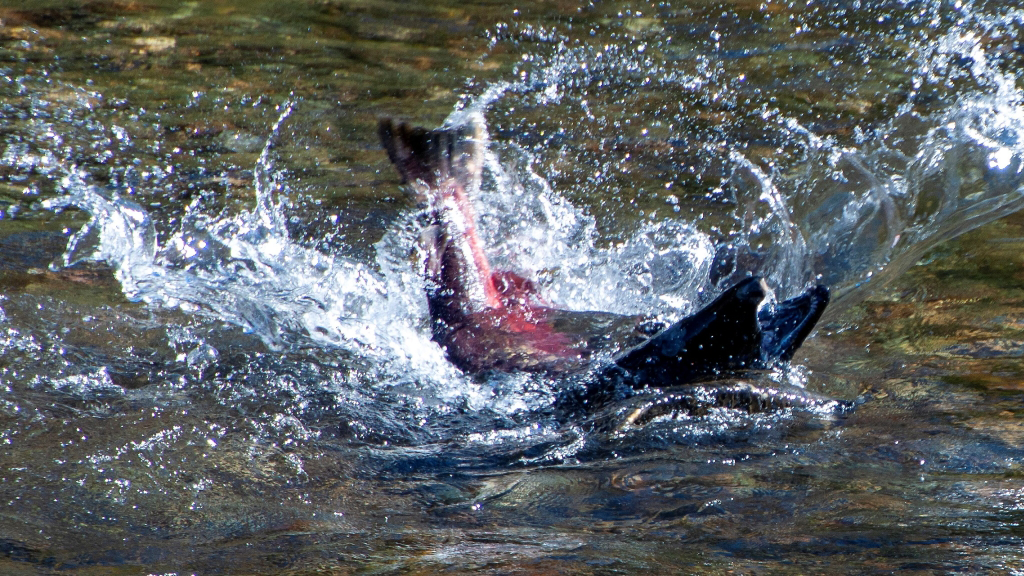At a June 4 hearing, U.S. Sen. Patty Murray (D-WA), Vice Chair of the Senate Appropriations Committee, questioned Commerce Secretary Howard Lutnick on the decision to eliminate the Pacific Coastal Salmon Recovery Fund. The proposal is included in President Trump’s fiscal year 2026 budget request for the department.
During a Senate Appropriations Commerce, Justice, Science, and Related Agencies Subcommittee hearing on Trump’s 2026 budget request, Murray detailed NOAA’s role in the nation’s fisheries and the importance of salmon to Washington state’s way of life, noting Trump’s request to zero out funding for this key regional salmon program.
“Now, I do want to ask you while you’re here, one of the agencies you oversee is NOAA. It is absolutely essential to supporting sustainable fisheries, protecting our natural resources, and making sure that we have accurate weather forecasts. Cutting away at NOAA—as you have been doing and as your budget proposes to do further—is going to do serious harm. Among other cuts, your budget would completely eliminate the Pacific Coastal Salmon Recovery Fund. That would be a catastrophic failure—it would abandon our communities, our Tribes, and our industries who rely on salmon. And across the Pacific Northwest, salmon are not just fish—they are a way of life, and they are foundational to our economy and our culture. So, I would like you to explain quickly why you proposed that cut, and I want to ask you, did you consult with our Tribes or fishing communities who count on it before making that decision?”
Lutnick replied, “The issues are that we do the same thing in multiple ways in NOAA. We have not cut any hydrologists, which are the people who study the water.”
“You eliminated the Pacific Coastal Salmon Recovery Fund. That is what I’m precisely asking you about. Did you talk to our tribes or fishermen before you did that?” Murray asked.
“Of course,” said Lutnick.
Murray said, “Well, I have spoken to the tribes, I’ve talked to the scientists, I’ve talked to the fishermen. No one—no one—in the Pacific Northwest supports those cuts. And I want everyone to know I will not vote for an appropriations bill that eliminates that funding.”
“NOAA Fisheries’ Pacific Coastal Salmon Recovery Fund (PCSRF) provides funding to states and tribes to protect, conserve, and restore Pacific salmon and steelhead fish populations,” currently says NOAA Fisheries’ website.
“The Pacific Coastal Salmon Recovery Fund (PCSRF) https://www.fisheries.noaa.gov/west-coast/endangered-species-conservation/pacific-coastal-salmon-recovery-fund funds the protection, species conservation, and restoration of salmon and steelhead species for the benefit of local communities, including tribal communities. Each PCSRF project advances the common goal of full recovery and sustainability of Pacific salmon and steelhead populations. The continued commitment and collaboration from our partners are vital to reversing the decline of salmon and steelhead species.
“As of 2023, PCSRF has appropriated $1.8 billion to state and tribal salmon recovery programs and projects. With this funding, states and tribes have leveraged additional resources to collectively implement nearly 16,000 salmon recovery projects to conserve West Coast salmon. This has resulted in significant changes in salmon habitat conditions and availability. As of October 2023, nearly 1.2 million acres of spawning and rearing habitat have been restored, created, or protected for salmon. Additionally, access to more than 12,000 miles of previously inaccessible streams has been re-established.”
NOAA Fisheries’ website notes that in 2000, “Congress established PCSRF to reverse the decline of Pacific salmon populations. PCSRF is a competitive grant program through which NOAA Fisheries administers funding to states and tribes to protect, conserve, and recover these populations.”
The site also documents: “Several studies indicate that a $1.0 million investment in watershed restoration, in which PCSRF and state matching funds play a significant role, creates between 13 and 32 jobs and between $2.2 and $3.4 million in economic activity. Furthermore, habitat restoration projects exemplify ecosystem services and mitigate forces against natural disasters and climate change. For example, floodplain restoration reduces flood risk and can lower flood insurance rates. Planting native trees and vegetation naturally sequesters carbon and stores it in plants and soils, increasing nature’s carbon storage. The greatest socio-economic implication of salmon recovery is in securing healthy ecosystems that ultimately provide vast public and private benefits for current and future generations.”
In another hearing this week, Washington’s other Democratic Sen. Maria Cantwell, ranking member of the Senate Committee on Commerce, Science, and Transportation and a senior member of the Senate Finance Committee, joined meteorologists from across the country for a virtual presser to “sound the alarm” on cuts to the National Weather Service as the United States heads into peak hurricane and wildfire season – and call on the Trump Administration to restore the agency to full capacity.
“For at least a half a century, the National Weather Service has provided forecasts for 24 hours a day, seven days a week — until now. At least eight weather forecasting offices no longer have a meteorologist to cover overnight shifts. They are planning on eliminating the NOAA buoy program. You can’t map a hurricane if you don’t have the buoy information,” Cantwell said. “NOAA has been transparent that they can’t keep up. They have said that they can’t keep the lights on in a number of forecast offices. The Department of Commerce needs to be clear to the American people that the staffing shortages will impact our ability to compute that science [and] get those wildfire crews and emergency response where they need to go.”
Over the past several months, the NWS lost over 560 employees due to layoffs and retirements under the Trump Administration. On Monday, they announced they’d hire 126 – amounting to “a flimsy band-aid,” Cantwell said.
“This dangerous decision to leave critical jobs unfilled comes as the National Interagency Fire Center, a partnership which includes NWS, released its Fire Maps for the next four months predicting above normal significant fire potential across the West, in Hawaii, the coasts of North and South Carolina, and parts of Texas and Florida., said a Cantwell press release.

